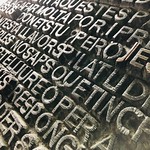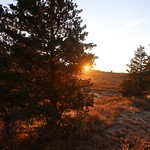Georgia: Natives and Explorers and Settlers from 1520-1732
Explorers and Settlers:
Lucas Vázquez de Ayllón
First colony in the US at San Miguel de Gualdape, established in 1526.
Location unknown, possibly Sapelo Island.
Hernando DeSoto
Known to travel through Georgia in 1540.
Appears to have killed many natives and left diseases behind.
The King Site is an archaeological dig related to his travels.
Jean Ribault
Fort Charles (SC) and Fort Caroline (FL) in the 1560’s
Spanish missions on the coast
St. Augustine in Florida
Mission Santa Catalina de Guale
1597: Juanillo Rebellion
1721 : Fort King George
This is the oldest English fort remaining on Georgia’s coast. From 1721 until 1736, Fort King George was the southern outpost of the British Empire in North America.
1732 : Oglethorpe had Georgia named a colony by the king
– Azilia
– Jean Pierre Purry – named Georgia
Places:
Fernbank has DeSoto exhibit
Three historical markers commemorate Hernando de Soto in Georgia:
Carters Lake visitors’ center near Ellijay
along the Riverwalk in Augusta
tourism office in Milledgeville
Creek Indians
Creek Indians
Creek Indians
By the time Spanish conquistadors worked inland in search of the wealth of a continent the Moundbuilder culture was in steep decline. Cahokia, Etowah and Ocmulgee, major cities of a dying culture, were no longer active sites. The remaining Moundbuilders were absorbed into the Woodland cultures which they dominated. With few exceptions in the state of Georgia, the Indians that deSoto met were not Moundbuilders, but these remnants of that tribe.
Cherokee
1703 : Ostenaco
Cherokee Indians
Early History
The Cherokees inhabited the mountainous South long before the arrival of Europeans and Africans. Archaeological evidence and Cherokee origin stories indicate that Cherokee forbears settled their historic homeland many generations prior to the Spanish incursions of the sixteenth century. Occupying a land where a complex river system reached the Atlantic Ocean, Gulf of Mexico, and Mississippi River Basin, the Cherokees developed extensive relations with many indigenous peoples.
Etowah Indian Figures
Foremost among these relationships during the Historic Period were those with the Creek Indians.
Cherokees and some of the ancestors of the Creeks had a long history of interaction in the north Georgia mountains. Both had ancestors who were part of the Mississippian Period chiefdoms (A.D. 800-1600) and who built impressive mounds throughout Georgia. With the arrival of Spanish explorers and Old World diseases, the chiefdoms collapsed, and remnant populations coalesced into new political entities, such as the Cherokees and Creeks. North Georgia subsequently served as a dynamic borderland between the two groups after the arrival of the British in the Southeast.

GBK Gwyneth









































Leave a Reply